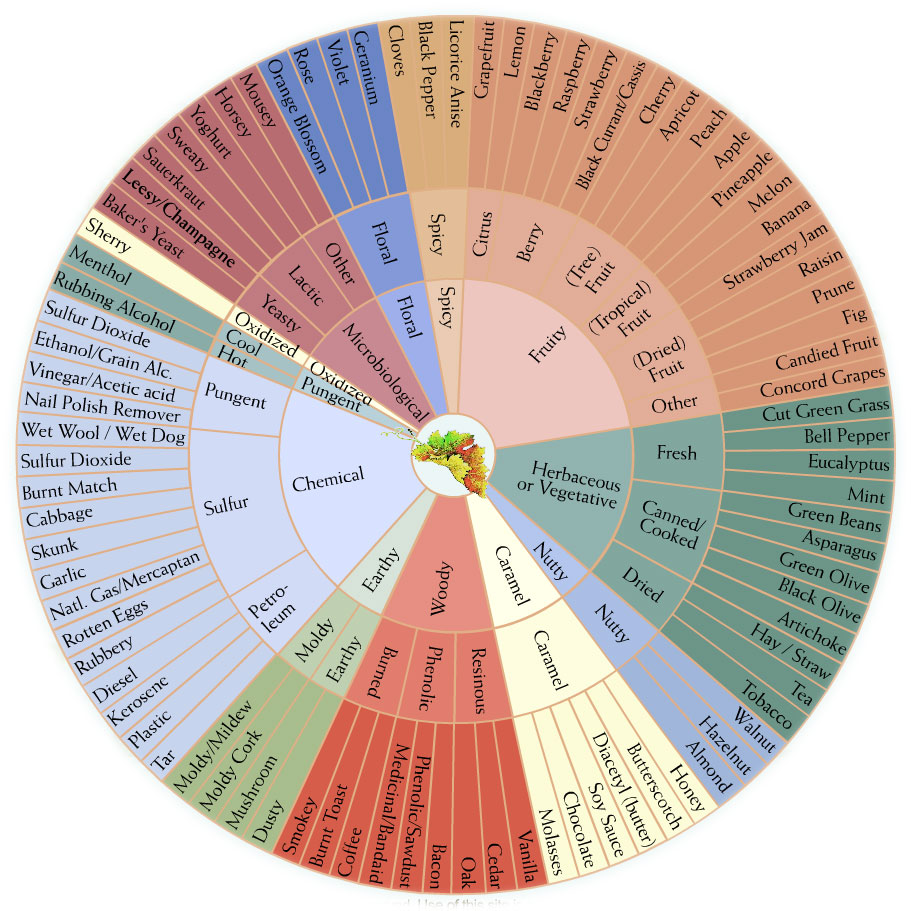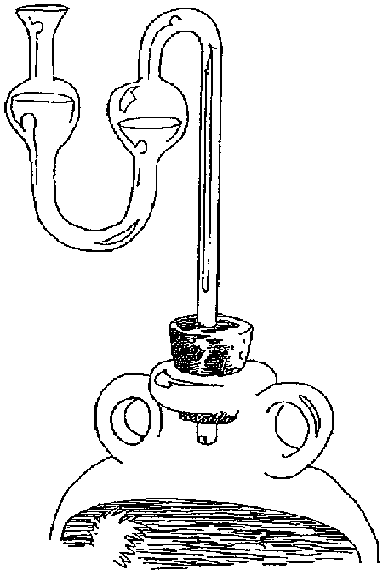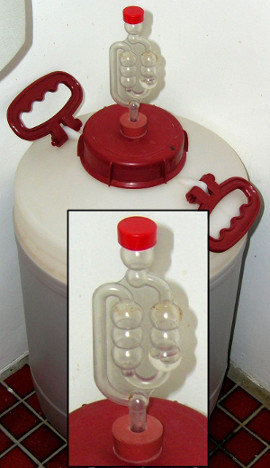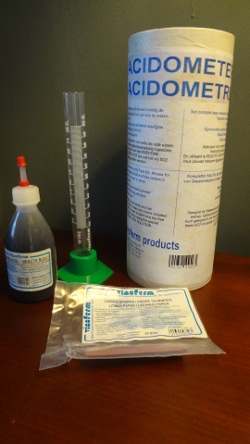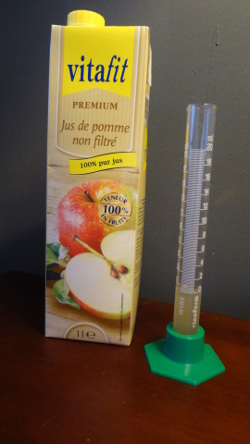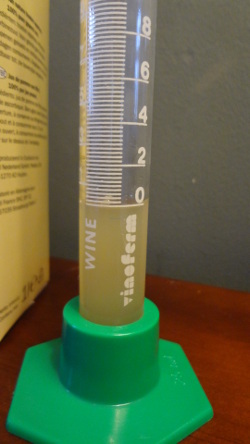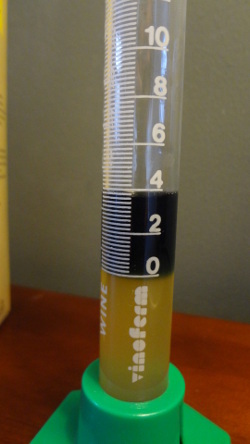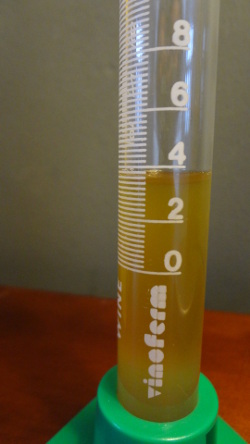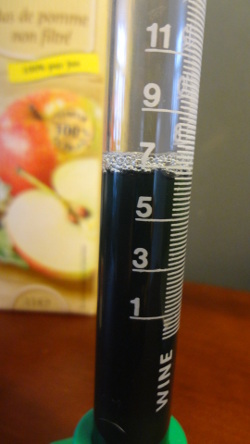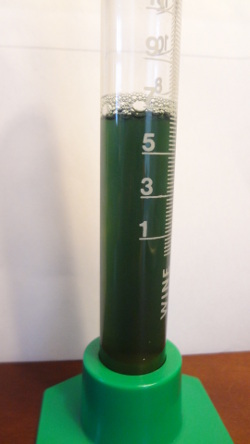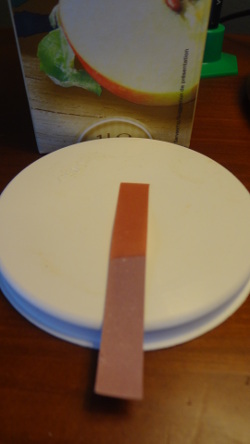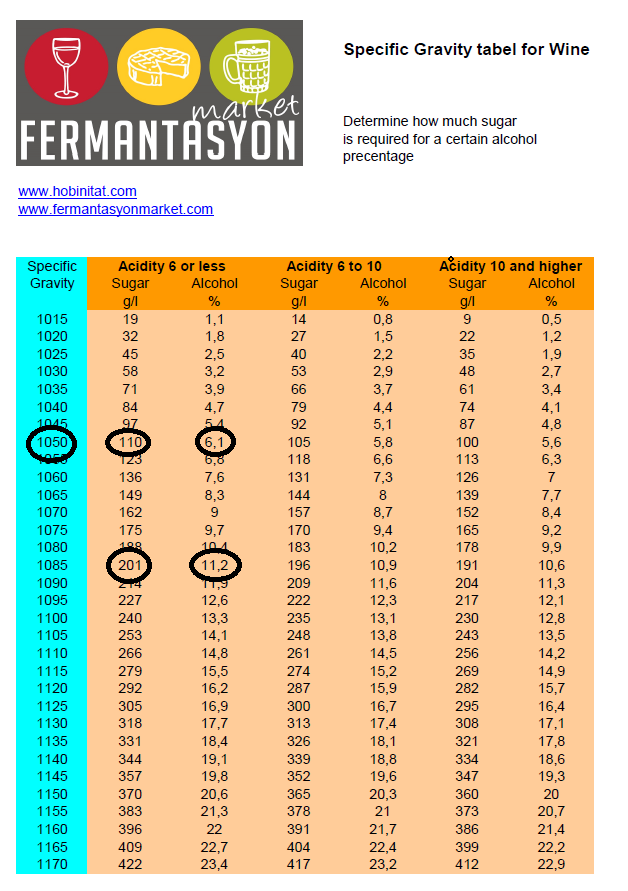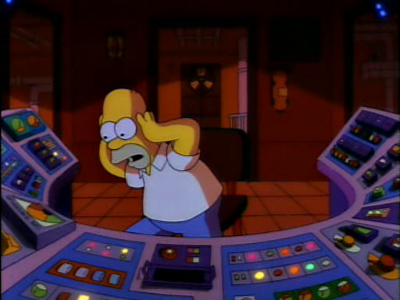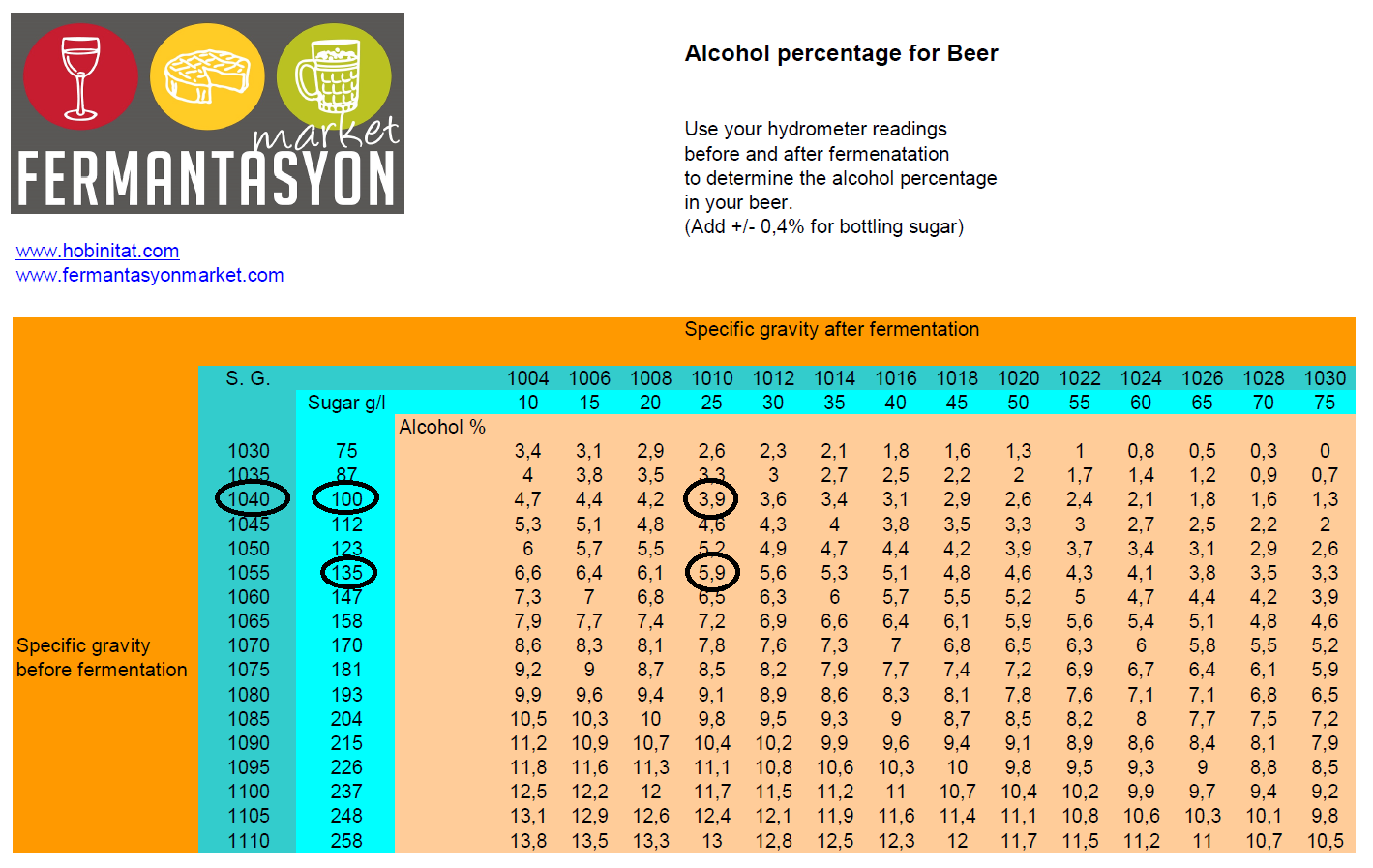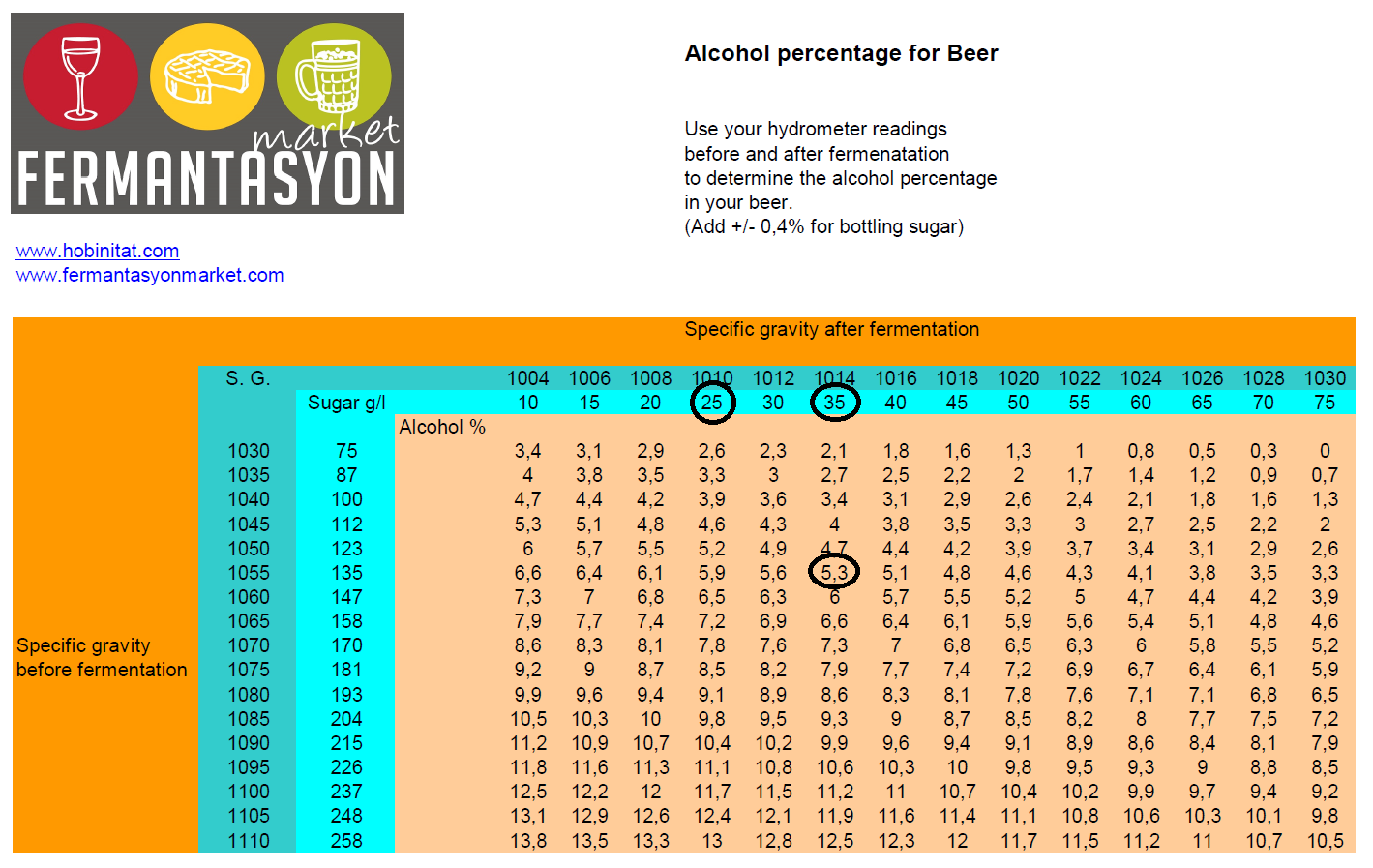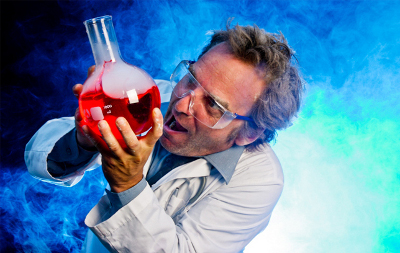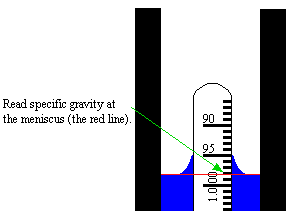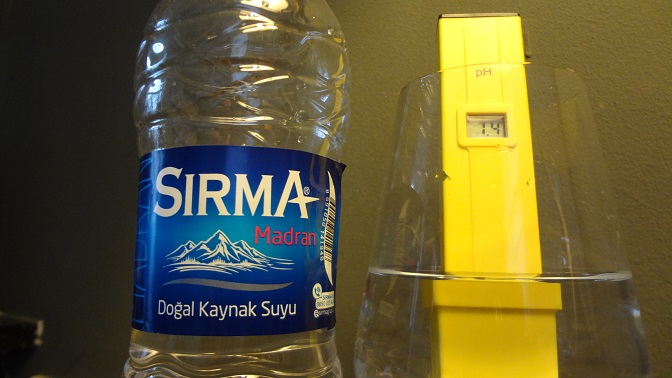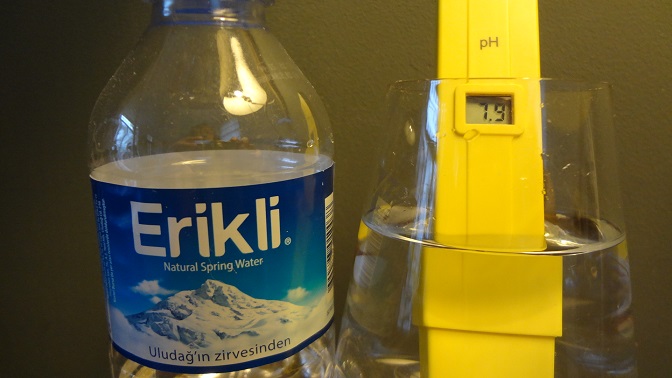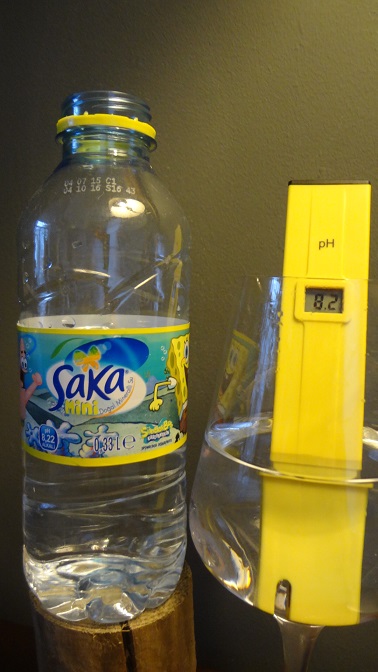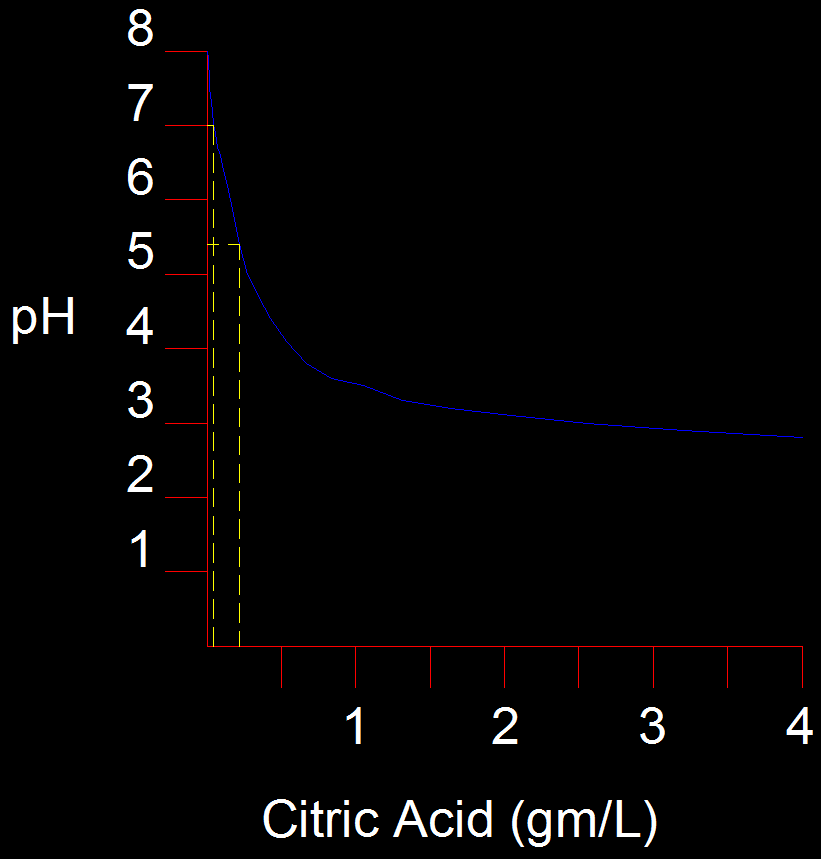Today the first wine failure: Topping up. What is it? Why? How?
Years ago I started making wine. I had no idea how, but I bought some demijohns and other equipment. To make it easy I decided to start with some kit wines. (Actually that was the first mistake.) They come with everything you need, and a manual.
Making the wine was not difficult and very interesting. I enjoyed it. Fermentation started and finished. I racked it and made my first mistake: I did not fill the demijohn but I left a lot of empty space above the wine.
Empty? No. It is filled with wine’s worst enemy! Air!
Or to be more specific: Oxygen. Oxygen reacts with wine and it causes off tastes and flavors.
In small quantities Oxygen is not a problem and actually improves (red) wine when it ages, but this was not the case.
When the wine is fermenting it is no problem to have empty space because the CO2 that is formed is heavier than air and forms a protective blanket above the wine. Thinking about this image gives me a warm, save feeling.
But we were already passed this stage. I had no idea that I was damaging the wine and I racked it again and still another time. Destroying the blanket and each time the wine was supplied with fresh Oxygen. Which sounds nice if you are human, but is killing the wine.
I used Sulphite to protect it but it was not going to help against my ignorance.
After 6 months or so I bottled the wine and it did not taste well. There was something wrong. I read the manual and finally found out what “Topping up” means. Very simple; fill the demijohn.
So, what should I have done? Well there are several options:
- Buy some wine which is similar to your wine and add it to the demijohn until the bottom of the neck. In case you need to top up just a small amount you can also use water.
- Transfer the wine to smaller demijohns. I have several sizes so I can always find a reasonable combination. The last liters you can store in normal bottles which you can use to top up when you rack again.
- Something I read but never tried: Top up the demijohn with glass marbles. Tilt the demijohn so the marbles do not break it when they fall on the bottom. Or put them in cheese cloth which you can lower slowly in the demijohn with a piece of string. And of course the marbles should be sterilized. Again: I never tried this.
At the moment I have changed my racking strategy a bit. Actually a lot. Many people have the idea that you should rack quite often. Some say even every 2 months. I disagree with that.
I rack from a fermentation bucket to a demijohn when the fermentation is almost finished, after a few months when the wine is practically clear, and once more one day before bottling. I try to rack only a few times to have as little contact with air as possible. I will come back to this in another story in the failure series.
Hans



